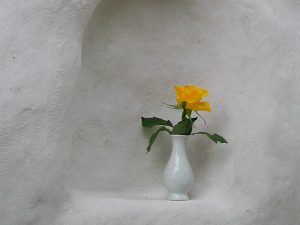All types of building lime are made from limestone, which is a sedimentary rock composed of the dead bodies of sea creatures such as shellfish, corals and some planktons.
Some limestone can also be formed via precipitation of calcium carbonate from water – such as in the case of stalagtites and stalagmites.
Limestone is one of the most abundant of all rocks, and occurs in virtually every country in the world.
When a sedimentary rock gets buried by subsequent sediments, given time (millions of years), the pressure and heat changes it – to a metamorphic rock. The metamorphic rock formed when limestone is changed under heat and pressure is marble. In parts of Italy where marble is common, it has even been burnt to produce building lime! (although it’s harder to burn to produce quicklime – because it’s harder and denser – more difficult to produce a uniform fine powder).
The chemical composition of limestone is CaCO3, (calcium carbonate).
Most limestone was laid down between 60 and 150 million years ago, mainly in the Cretaceous period.
The conditions for limestone deposition is identical to that of the depositon of very fine sediments that form clays, and so although there are widespread pure limestone deposits, there are also extensive deposits of ‘impure’ limestones – with clay impurities. These limestones are used to make hydraulic limes; i.e. they are naturally hydraulic (see ‘different types of lime’). An example is Lias-type limestone.
Chalk is a type of limestone composed of very fine, white sediment. It is a particularly pure type of limestone, made from the remains of microscopic sea creatures, and it contains no impurities of clay or other sediments. This is probably because it was formed further out to sea from the river mouths that can deposit other sediments.
Dolomite – CaMg(CO3)2 – is another type of limestone made from the bodies of creatures that contain magnesium carbonate as well as calcium carbonate. This is not so good for producing quicklime.
Without limestone, we wouldn’t exist. Volcanoes have produced CO2 for millions of years. This build-up should have produced a massive greenhouse effect (as has happened on Venus); but CO2 is soluble – it dissolves into sea water. But the oceans would soon be saturated, if sea creatures didn’t take up CO2 for shells, then die, to produce limestone. It’s a good feeling to be able to use this important material on your home.
Lime has been used as a building material for around 3000 years. The Minoans were using it in pre-Roman times on Crete.

